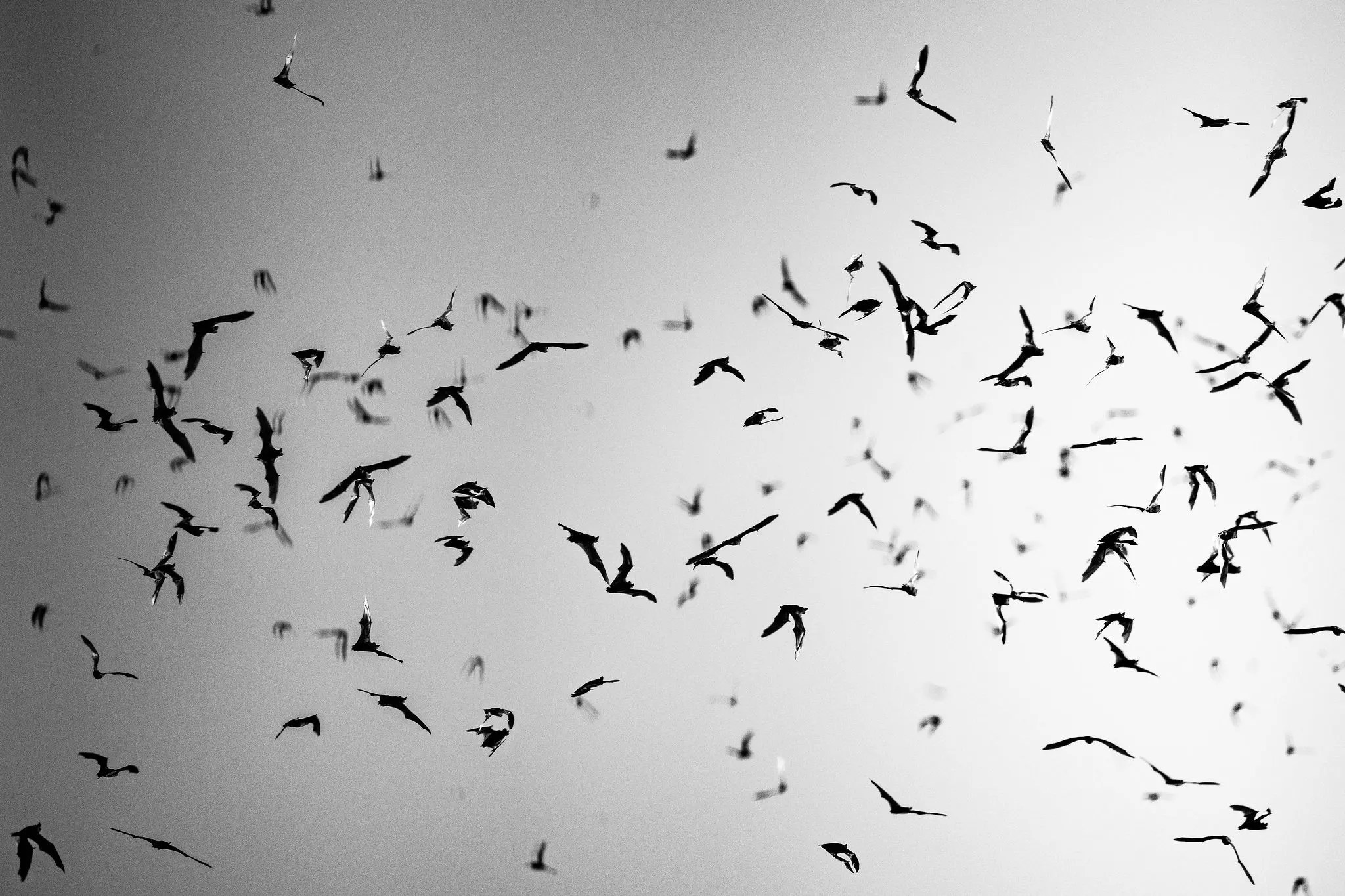
Neil Schwartz Photography

Audio By Carbonatix
Each night around sunset, in one of the most upscale parts of the city, the bats get ready to fly.
They’re Mexican free-tailed bats, a small species found up and down North, Central and South America. And from May to October, you can find them at the Phoenix Bat Cave.
It’s not really a cave. It’s a flood control tunnel located near Camelback Road and 40th Street, behind Phoenix Country Day School. But it is the summer home of a colony of around 10,000 bats.
The tunnel was completed in 1994, and the bats took up residence fairly quickly thereafter.
This year, make your gift count –
Invest in local news that matters.
Our work is funded by readers like you who make voluntary gifts because they value our work and want to see it continue. Make a contribution today to help us reach our $30,000 goal!
Angie McIntire, a bat specialist with the Arizona Game and Fish Department, says they’ve known about the colony since the ’90s.
“It’s within a neighborhood. I’m pretty sure some folks from the neighborhood let us know that they were seeing bats there,” she says.
The bats in the tunnel are the size of small birds, and weigh about as much as a AA battery, McIntire says. It’s a maternity colony, so most of the population are mothers and their young.
“There are times in June or July and even other times when they don’t come out right on cue, and it could be because they’ve recently had their babies,” she adds.
It’s quite a sight when they emerge from the tunnel; what begins as a trickle becomes a mass exodus as a seemingly endless line of bats dart out, turn and head southwest for their nightly hunt. (Mexican free-tailed bats feed on insects such as moths, wasps, ants, beetles and flies.)
There’s a stigma around bats (rabies, unusual appearance, the whole vampire thing), but McIntire wants to change the public’s perception of the winged mammals.
“I always like to tell people, bats never attack people, and so most of the misconceptions come from (the fact that) most people have never seen a bat up close; they don’t really even see bats unless they go to a location like this and see them flying,” she says. “But on any given night, there are anywhere from dozens to thousands of bats, depending on where you are in the Valley, that are out hunting insects. There are several different species that can cope with the urban environment, and then as you get into the wilder areas, Arizona is a very diverse state with 29 different species.”
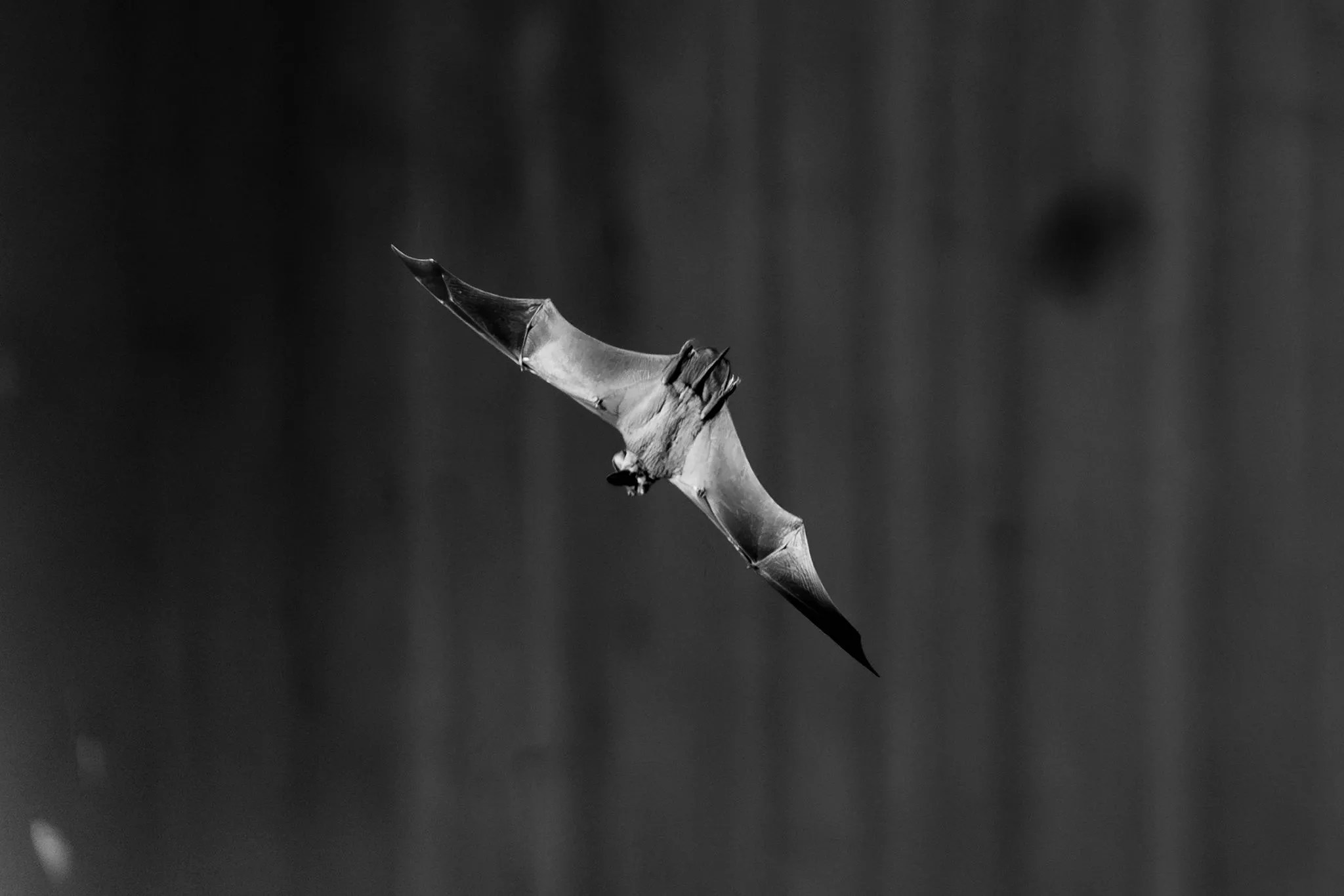
The bats are the size of small birds.
Neil Schwartz Photography
Bats don’t attack; their best defense is to fly away or back up into a crevice. And while you may be just a few feet away from a bat if you stand directly over the flood control tunnel, you’re not in any danger.
“There’s really nothing to worry about,” McIntire says.
In fact, the most dangerous thing about bats is interacting with one that’s lying on the ground.
“The bat should never be on the ground,” she says. “It doesn’t mean it has rabies. A lot of bats, they could be dehydrated, they deal with environmental and weather, temperature-related issues or hunting-related issues. There are a lot of explanations, but a bat on the ground should never be touched.”
Some of the bats stay through October, but the summer is the best time to make a visit to the Phoenix Bat Cave. Though listed as a Phoenix attraction on Atlas Obscura and the recipient of several New Times Best of Phoenix awards, the tunnel isn’t something a lot of Phoenicians have heard of, and even fewer have visited.
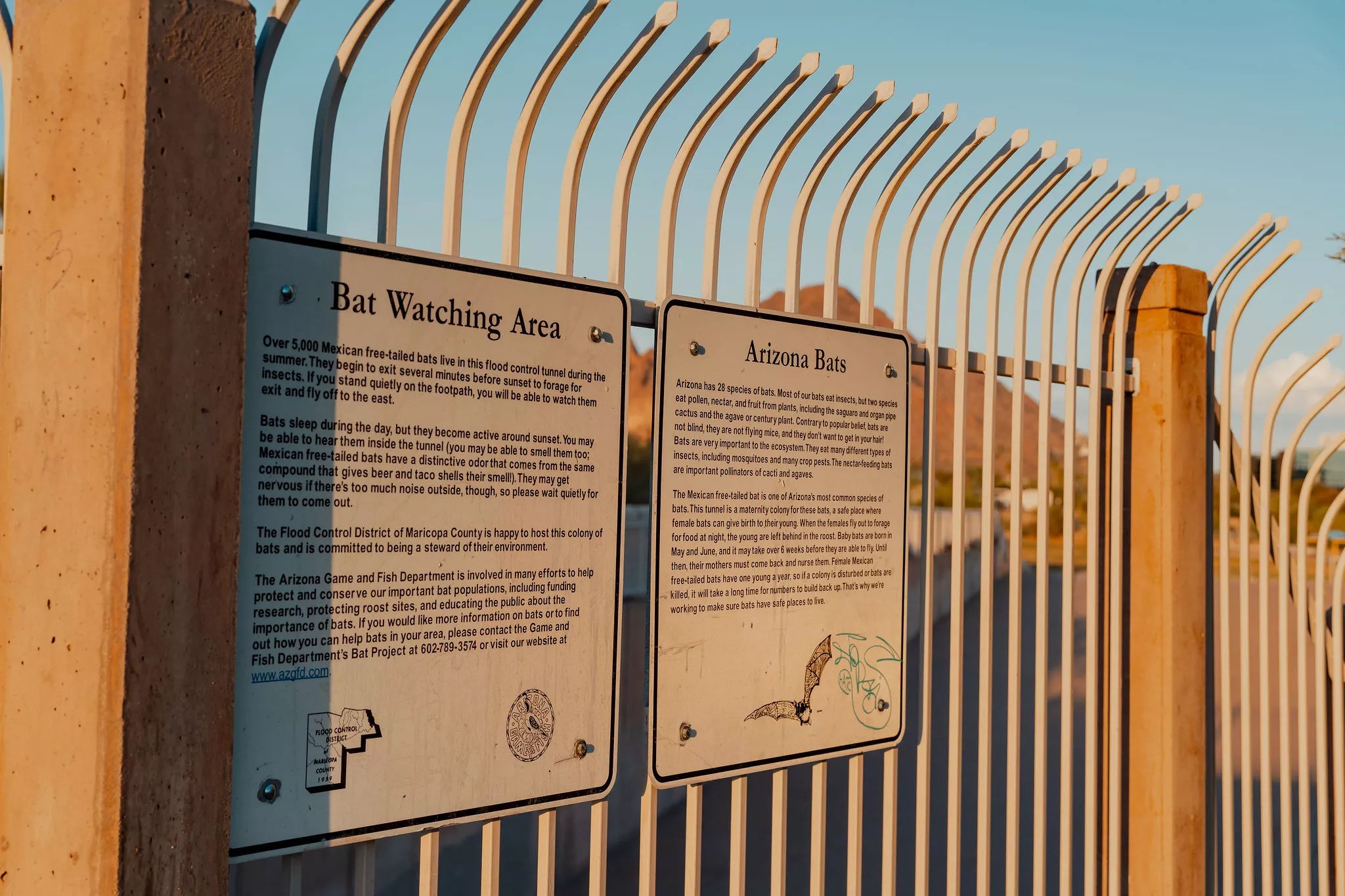
Signage near the tunnel gives information on the bats.
Neil Schwartz Photography
Are you interested in watching the bats fly? Here’s how to do it.
Parking: The best parking is at Chelsea’s Kitchen, 5040 N. 40th St. It’s a public lot, so you’re allowed to park there, but unless you plan to grab a drink or a bite before or after, maybe be polite and park away from the restaurant. Also, the gas station on the northwest corner of Camelback and 40th Street has a good amount of parking, but there are also “Reserved Parking” signs with a threat to tow. We’re not saying ignore them (and we’re not paying your tow fee), but it seems unlikely that parking there when the gas station is closed would be a problem.
Timing: The bats usually come out around dusk, but on a recent visit, they took their leave when it was still quite bright out. “It’s hard to get into the mind of a bat and know why they come out 15 minutes before sunset or 15 minutes after sunset,” McIntire says. Being in place by 6:45 p.m. will almost certainly guarantee that you see the full exodus.
The path: Getting to the Phoenix Bat Cave entails a short walk along the Arizona Canal. Once you’ve parked, start walking on the north side of the canal in the northwest direction (away from the Camelback/40th intersection). After about 10 minutes (depending on your walking speed), an office building on your right will give way to a path that runs parallel to the canal. Jump onto the path and follow it until you see the school and after that, a long fence. Below the fence is the flood control tunnel.
Other tips: The path is mostly flat earth with a bit of asphalt, so wear comfortable shoes. Bring water. And “be respectful” of the bats, McIntire says. No one wants to hear a bunch of yelling and screaming outside their home.
Here are a few more photos from a recent trip to the Phoenix Bat Cave.

Getting to the tunnel requires a short, pleasant walk along the Arizona Canal.
Neil Schwartz Photography

Bats aren’t the only wildlife you’ll see on a trip to the cave; we encountered ducks, quail and ground squirrels.
Neil Schwartz Photography
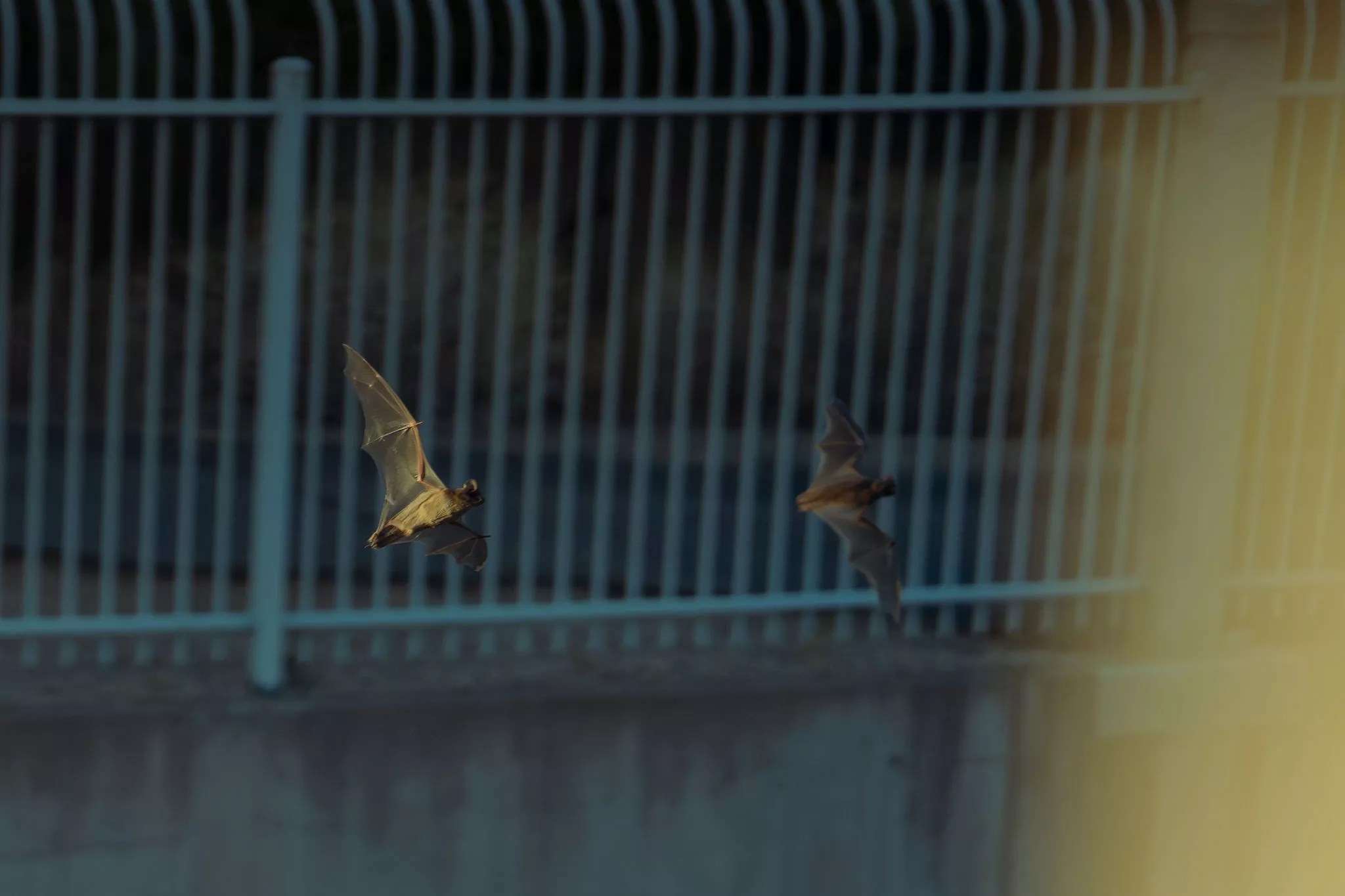
The bats that live in the cave are mostly mothers and their babies.
Neil Schwartz Photography
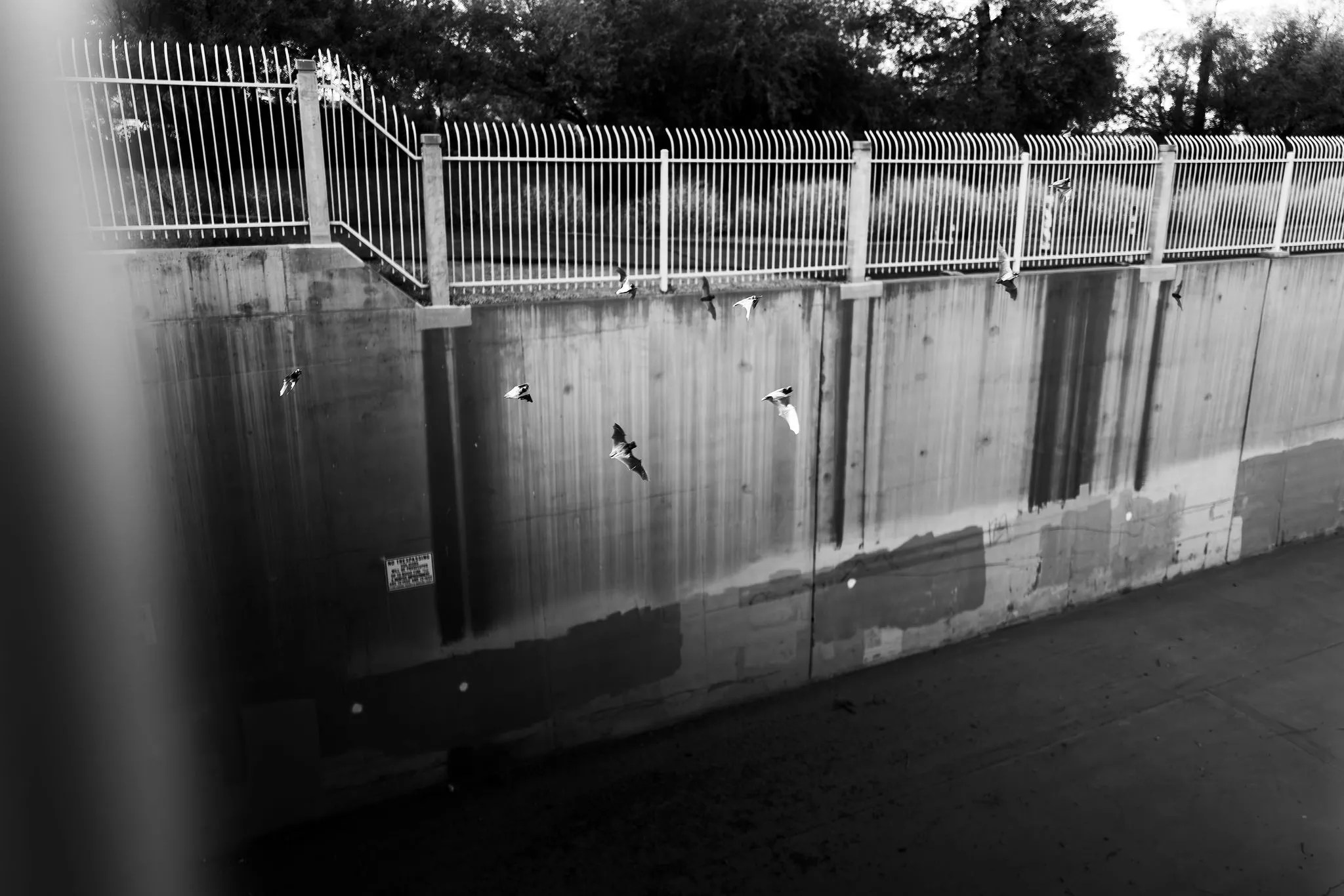
The first few bats leave the tunnel for the night.
Neil Schwartz Photography

The walk to the cave offers beautiful mountain views.
Neil Schwartz Photography
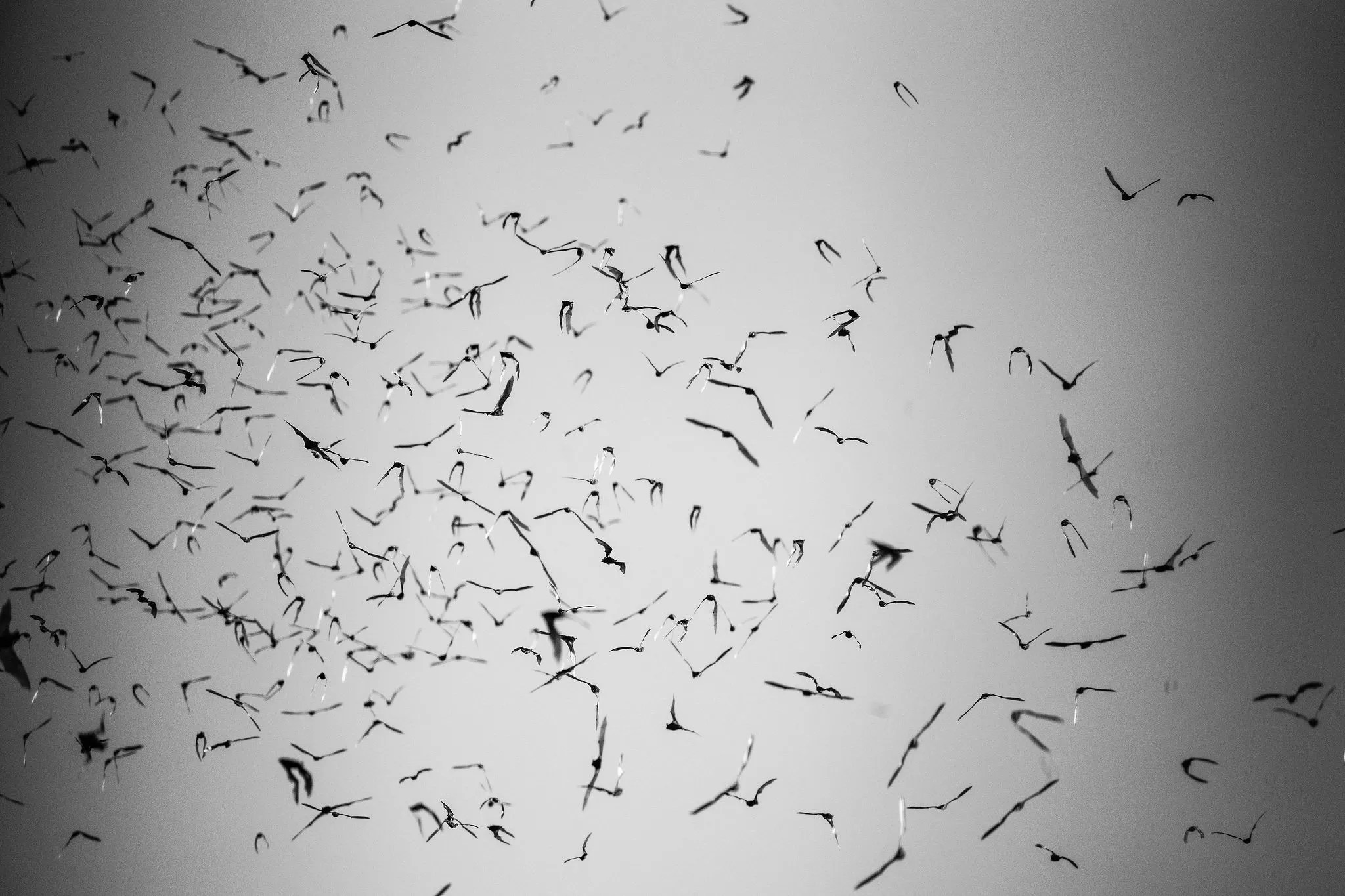
Thousands of bats flying at once is an incredible sight.
Neil Schwartz Photography